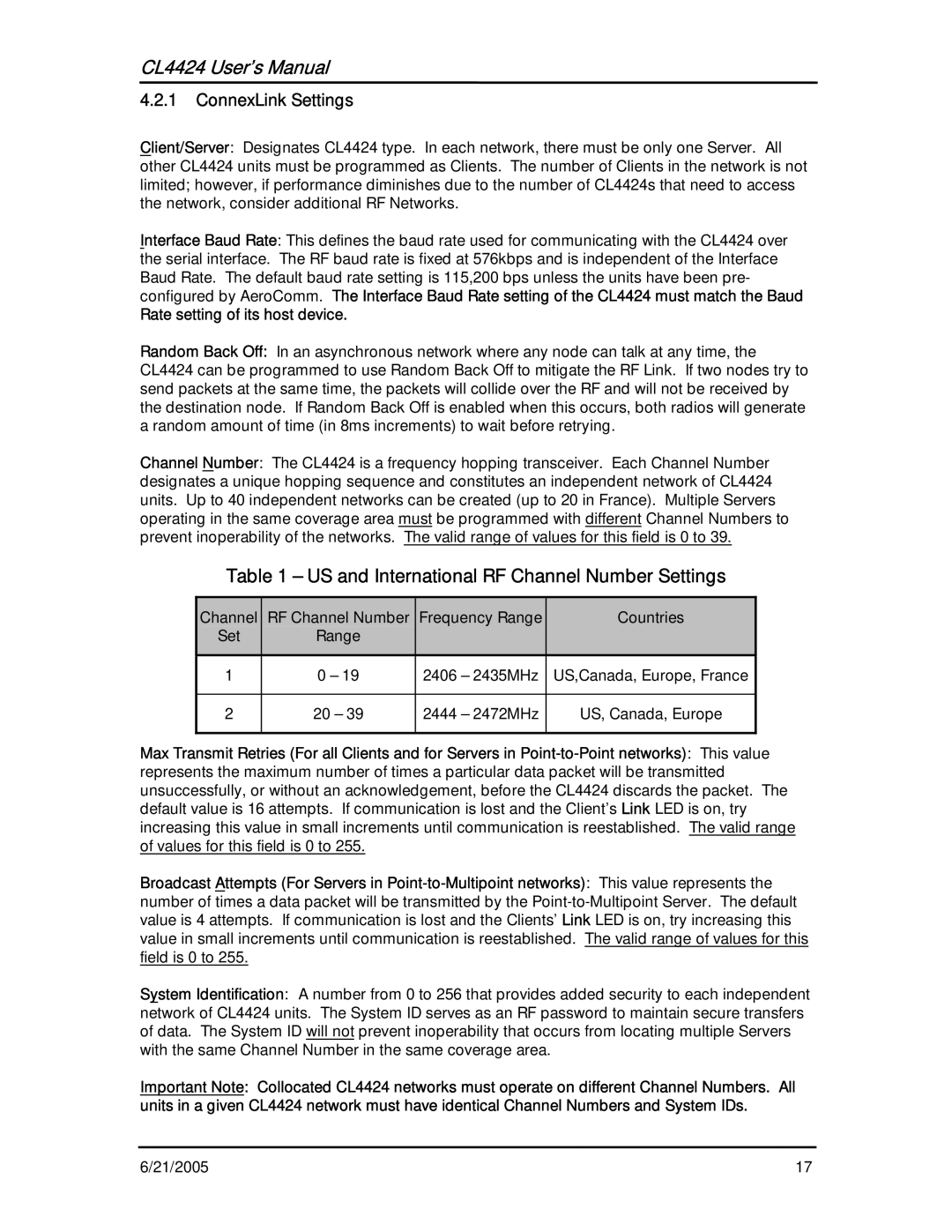
CL4424 User’s Manual
4.2.1ConnexLink Settings
Client/Server: Designates CL4424 type. In each network, there must be only one Server. All other CL4424 units must be programmed as Clients. The number of Clients in the network is not limited; however, if performance diminishes due to the number of CL4424s that need to access the network, consider additional RF Networks.
Interface Baud Rate: This defines the baud rate used for communicating with the CL4424 over the serial interface. The RF baud rate is fixed at 576kbps and is independent of the Interface Baud Rate. The default baud rate setting is 115,200 bps unless the units have been pre- configured by AeroComm. The Interface Baud Rate setting of the CL4424 must match the Baud
Rate setting of its host device.
Random Back Off: In an asynchronous network where any node can talk at any time, the CL4424 can be programmed to use Random Back Off to mitigate the RF Link. If two nodes try to send packets at the same time, the packets will collide over the RF and will not be received by the destination node. If Random Back Off is enabled when this occurs, both radios will generate a random amount of time (in 8ms increments) to wait before retrying.
Channel Number: The CL4424 is a frequency hopping transceiver. Each Channel Number designates a unique hopping sequence and constitutes an independent network of CL4424 units. Up to 40 independent networks can be created (up to 20 in France). Multiple Servers operating in the same coverage area must be programmed with different Channel Numbers to prevent inoperability of the networks. The valid range of values for this field is 0 to 39.
Table 1 – US and International RF Channel Number Settings
Channel | RF Channel Number | Frequency Range | Countries |
Set | Range |
|
|
|
|
|
|
1 | 0 – 19 | 2406 – 2435MHz | US,Canada, Europe, France |
|
|
|
|
2 | 20 – 39 | 2444 – 2472MHz | US, Canada, Europe |
|
|
|
|
Max Transmit Retries (For all Clients and for Servers in
Broadcast Attempts (For Servers in
System Identification: A number from 0 to 256 that provides added security to each independent network of CL4424 units. The System ID serves as an RF password to maintain secure transfers of data. The System ID will not prevent inoperability that occurs from locating multiple Servers with the same Channel Number in the same coverage area.
Important Note: Collocated CL4424 networks must operate on different Channel Numbers. All units in a given CL4424 network must have identical Channel Numbers and System IDs.
6/21/2005 | 17 |
